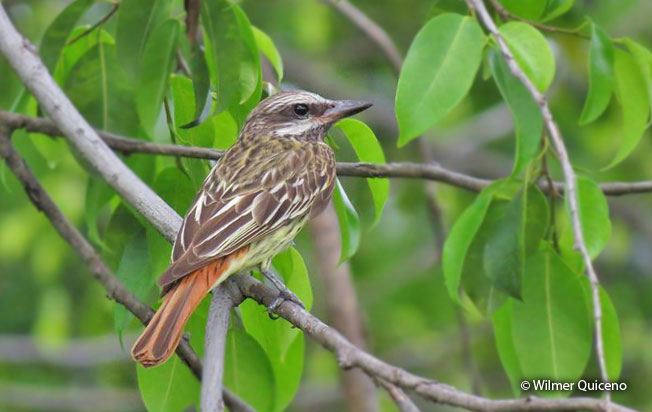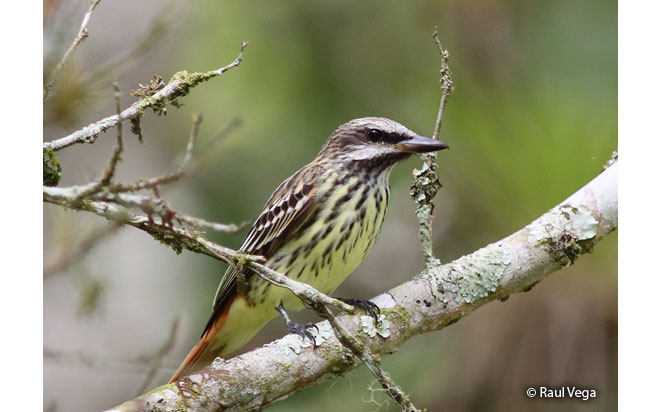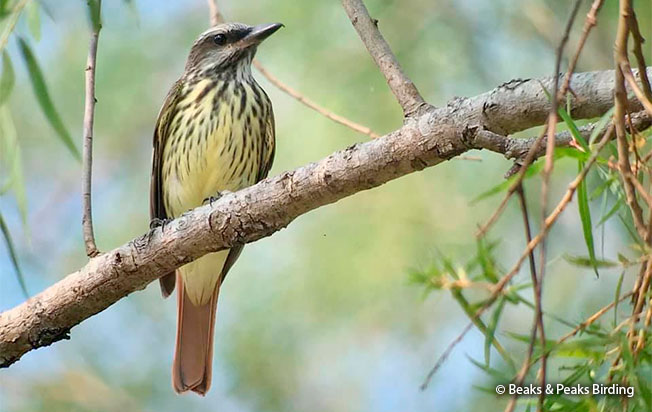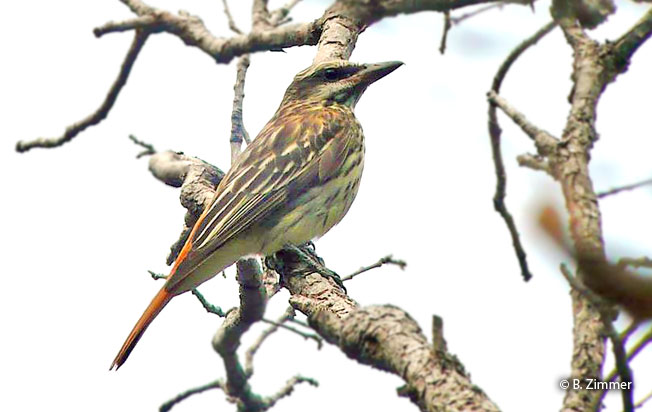Order: Passeriformes | Family: Tyrannidae | IUCN Status: Least Concern

Age: Adult | Sex: Unknown | Loc. Amazonian Colombia

Age: Adult | Sex: Unknown | Loc. Costa Rica

Age: Adult | Sex: Unknown | Loc. Gracias Lempira, Honduras

Age: Adult | Sex: Unknown | Loc. Amazonian Brazil
Status: The Sulphur-bellied Flycatcher is a Boreal migrant to the foothill of the Andes (~1200 m) and Amazonia. It is expected in Peru during the months of September through April. The Sulphur-bellied Flycatcher also occurs in Co, Ec, Br, and Bo.
Name in Spanish: Mosquero de Vientre Azufrado.
Sub-species: Sulphur-bellied Flycatcher (Myiodynastes luteiventris) P. L. Sclater, 1859 1766.
Meaning of Name: Myiodynastes: Gr. muia, muias= fly dunastes, dunamai= ruler, to be mighty. luteiventris: L. luteus, lutum= saffron-yellow and venter, ventris= belly.
 Voice
VoiceReferences:
-
- Species range based on: Schulenberg, T. S., D. F. Stotz, and L. Rico. 2006. Distribution maps of the birds of Peru, version 1.0. Environment, Culture & Conservation (ECCo). The Field Museum. http://fm2.fieldmuseum.org/uw_test/birdsofperu on 03/01/2017.